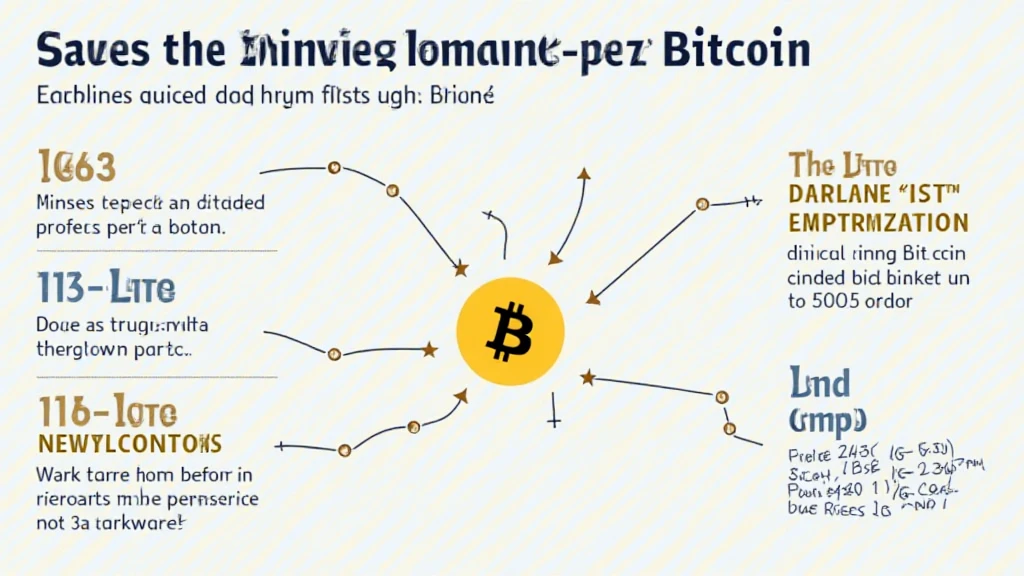Understanding Bitcoin Mining Difficulty Adjustments
With the rise of Bitcoin to an all-time high of over $60,000 and a market capitalization exceeding $1 trillion in early 2021, the intricacies of Bitcoin mining became a hot topic. Bitcoin mining is a crucial aspect of the blockchain economy, acting as the backbone of transaction verification and network security. However, with this responsibility comes a complicated mechanism: Bitcoin mining difficulty adjustments. Through this article, we aim to demystify this important feature and its implications for miners, investors, and the future of cryptocurrencies.
What Is Bitcoin Mining Difficulty Adjustments?
In simple terms, Bitcoin mining difficulty adjustments are recalibrations made to the mining process to ensure that new blocks are created approximately every 10 minutes. This mechanism is essential to maintaining the stability and predictability of the Bitcoin network. But, why do these adjustments occur?
Understanding the Mechanics
Bitcoin’s blockchain operates on a decentralized consensus mechanism. The total hashing power of the network can change based on the number of miners participating. As more miners join the network and increase the hashing power, new blocks would begin to be added more quickly than every 10 minutes. Conversely, if miners leave the network, it can lead to longer intervals between blocks.

Thus, the Bitcoin protocol includes a built-in mechanism that adjusts the difficulty of mining every 2,016 blocks or roughly every two weeks. The adjustment can make mining easier or harder based on the overall network’s hashing power. If blocks are being mined too quickly, the difficulty will increase; if blocks are being mined too slowly, the difficulty will decrease.
The Importance of Difficulty Adjustments
Understanding Bitcoin mining difficulty adjustments is crucial not just for miners but also for investors and blockchain enthusiasts. Let’s break it down further:
- Network Stability: Difficulty adjustments maintain a consistent block time, ensuring the Bitcoin network operates smoothly.
- Security Implications: A stable mining process is essential for the security of the blockchain. If the mining difficulty is not adjusted, it could lead to vulnerabilities.
- Economic Impact: Miners’ profitability hinges on mining difficulty and block rewards. Fluctuations can affect miners’ decisions to continue mining.
The Economic Model of Mining
Let’s dive deeper into how the economic model surrounding Bitcoin mining relies heavily on difficulty adjustments.
Block Rewards and Halving
Miners are rewarded for solving complex mathematical problems with a block reward, which will be halved approximately every four years. These halving events impact the supply and demand of Bitcoin and, consequently, the mining landscape.
As we approach future events, the role of difficulty adjustments becomes even more pertinent. In Vietnam, for instance, there has been a significant increase in cryptocurrency interest, with a 300% rise in users in 2023 alone, indicating heightened competition in the mining arena.
Example: Historical Data
To fully understand the effects difficulty adjustments have on mining economics, let’s take a look at historical data:
| Date | Block Height | Difficulty Level |
|---|---|---|
| 2022-05-01 | 735,000 | 20,000,000,000,000 |
| 2022-05-15 | 736,000 | 20,200,000,000,000 |
| 2022-06-01 | 738,000 | 19,800,000,000,000 |
As you can see from the data, fluctuations in difficulty levels directly correlate with the network’s total hashing power.
Challenges and Controversies
No system is without controversy, and Bitcoin mining difficulty adjustments face skepticism from various factions.
Centralization of Power
One of the primary concerns is the centralization of mining power. As mining difficulty increases, smaller miners may be unable to compete with larger mining farms, often leading to centralized control over the network. This is especially concerning given the rise of large mining operations in specific regions of the world.
Conclusion: The Future of Bitcoin Mining
As the cryptocurrency landscape continues to evolve, understanding Bitcoin mining difficulty adjustments will remain paramount. Both miners and investors need to stay informed about how difficulty adjustments can impact profitability, security, and the overall health of the Bitcoin network.
The dynamic nature of difficulty adjustments means that what works today may not work tomorrow. As we move into the future, keeping a finger on the pulse of these changes will be essential.
In conclusion, Bitcoin mining difficulty adjustments are not merely technicalities; they are critical components of the Bitcoin ecosystem that influence a wide array of factors including network stability, miner behavior, and the overall security of blockchain technology.
For more insights, check out hibt.com.
As a reminder, invest wisely and consult local regulators for personalized financial advice. This article is for informational purposes only.
Written by Dr. John Crypto, a leading authority with over 20 published papers in blockchain technology and a consultant for major auditing projects.





